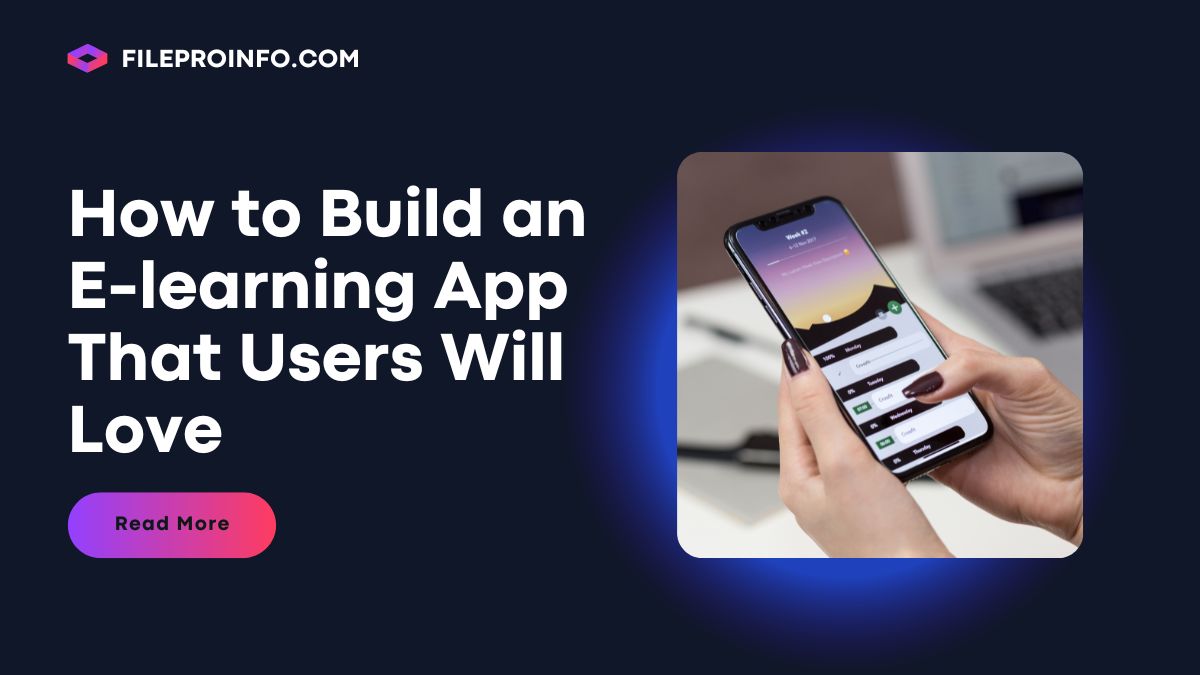
With the e-learning market projected to reach approximately $315 billion in 2023, the demand for e-learning apps remains incredibly high. But how does one design a truly valuable and user-centric app when there are so many similar solutions out there in the market? This article aims to look at the core features of a great e-learning app that are to be considered if you want to please users and make it to the top of the App Store list.
An Overview of E-learning and its growth
Though this article focuses on mobile e-learning, it won’t go amiss to look at the overall state of the e-learning market and its current trends:
- Mobile e-learning is expected to grow at a CAGR of 25% between 2022 and 2028;
- E-learning provides 60% faster learning and observation, according to Papers Owl;
- There is a $38 Billion increase in the market specifically for e-learning mobile;
- In 2023, the revenue from online e-learning platforms is expected to reach $2.85 billion.
As you can see, e-learning is in high demand and provides great quality learning but, more importantly, users seem to prefer learning “on the go” aka through their mobile devices. It has become important for users to be able to access their courses anytime and anywhere. Thus, an effective mobile e-learning solution may bring you impressive ROI – but on the condition that you approach its development with careful planning.
So what are the essential features that make a truly great e-learning app? Let’s have a closer look.
Select an appropriate business model
When offering educational courses, one of the first things you’ll need to decide on is the business model of your app. There are various options available:
- Free: all materials are free for students and there will be in-app ads;
- Freemium: basic features/materials are free but a student will have to pay for advanced features;
- Subscription-based: a student regularly pays a subscription fee (i.e. a monthly fee) to use the materials;
- Fixed price: a student pays a fixed fee for a course/program and can then use the materials.
The choice of business model will impact your future revenue and will also impact your selection of content. For example, if you decide to go with the freemium model, you’ll need to select free and paid features.
Provide good onboarding experience
App onboarding is vital for a great user experience as it allows users to instantly learn about the app, the features that it provides, and about the way the learning process will go. If you need an example, think of Duolingo. As part of its onboarding process, the app suggests finding out your proficiency level from the start in order to adjust the program correspondingly.
This is actually a great feature as it adds more personalization and provides more value to users. It might also be a good idea to incorporate a walkthrough so a user learns what sections and content the app contains.
Implement assignments and tests
Though it sounds quite obvious, some app owners overlook the importance of having well-structured tests and assignments in the e-learning app. However, such tests contribute greatly to the learning process as they allow one to review the material and ensure that a user actually learned something. One more benefit is that successful completion of tests increases one’s motivation and involvement which, in turn, encourages users to further interact with the app.
There are various formats of tests and assignments (listening, essays, multiple choice questions, etc.) so you can mix different types to make the assignment more interactive and interesting. You can also add gamification which is now becoming a big trend.
Implement progress tracking and rewards
Another vital element of any e-learning app (in addition to stellar content, of course) is progress tracking and rewards. Visual display of one’s progress is an effective motivator for users to continue interacting with the app. Hence, when a user works on their task, a simple progress bar would be a great aid and encouragement.
You can also implement awards for completing certain tasks and/or tests. These rewards may come in the form of incentives that users can later use in the app.
Enable social media integration and build a community
Even though this point does not directly contribute to the learning process, it is a valuable add-on that users love. Since they usually want to share their success and progress with others, implementing social platforms would be a great idea. As well, you can implement an in-app community where users can talk to each other, send gifts, nudge, and perform other activities.
Depending on the app type that you have, you can also implement a built-in chat with teachers. If your app implies supervised learning, it is vital that students can always talk to their teachers and communicate effectively.
Bonus: the main do’s of developing a high-performing e-learning app
We’ve listed some of the core features of a good e-learning app above. Now let’s look at several best practices for designing such an app:
- Perform thorough marketing research before planning the development process: during the research phase, it is important to analyze your target audience, market needs, and existing solutions (including their pros and cons);
- Design a user-centric dashboard and user profile: a dashboard should display all relevant and important information such as completed tasks, user progress, their current course, achievements, etc.
- Offer customization: users should be able to customize not only their profiles but also their courses, as well as synchronize all needed tools (i.e. a calendar) with the app.
- Content quality should be the top priority: the cornerstone of any e-learning app is its educational content. Thus, make sure that your content provides real value to users and that your teachers (if you work with them) are highly experienced.
- Add gamification: gamification boosts the learning process a lot since it adds more fun, engagement, and interaction to it. You can add gamification to the learning process, tests, or both, depending on the program.
Summary
There are many e-learning apps in the market these days but only a few make it to the top of the list and retain users’ attention for a long time. The reason for that is their unique selling point that makes an app stand out. Whether it’s a fun logo, a memorable design, or a unique approach toward learning, it is essential for the app’s success. Hence, in addition to considering all the points mentioned above, dedicate some time to understanding what makes your product unique from the user’s perspective and how you can communicate this USP to the target audience.
Source: https://softteco.com/




